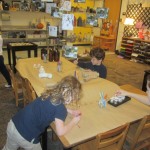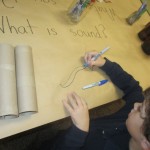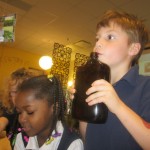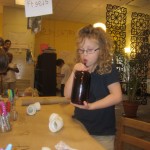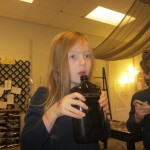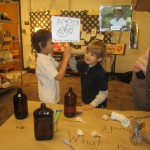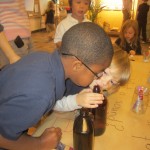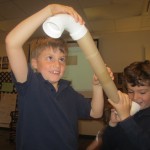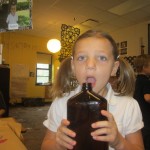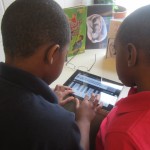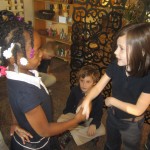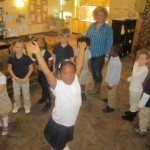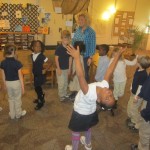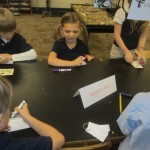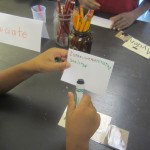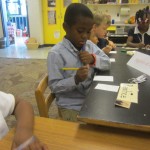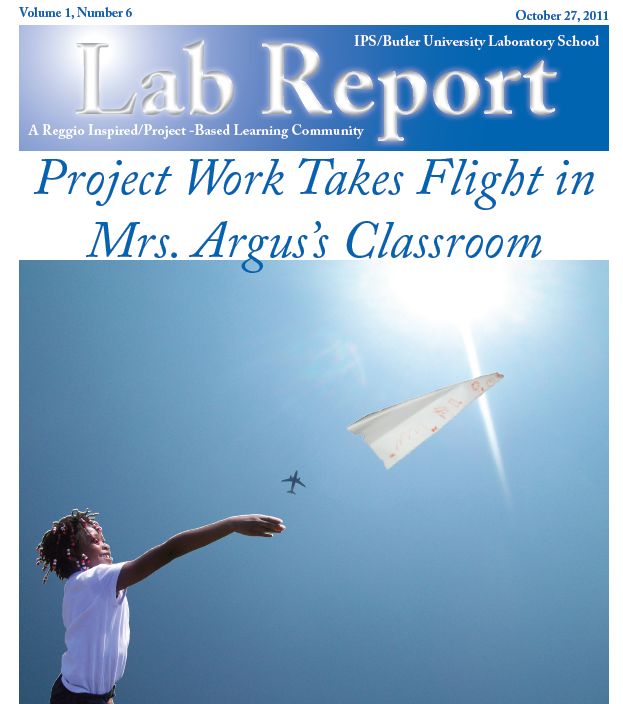Nov
07
2012

Mrs. Argus
Nov
07
2012

Ms. Hargrove
In several of our classes, this week involved going deeper into project work, or in some cases, introducing new projects. The students really enjoy working on projects, and this week has given us a glimpse into how beneficial project work can be, and how much students can learn while having fun at the same time.
In Mrs. Argus’ class this week, we began a new teacher-driven project about listening and sound. We are researching whether we can affect and potentially improve the students’ behavior, communication, and listening skills through their investigation of sound waves and the human aural system.
We initiated the project today by allowing the children to explore various tools and materials they can use to make sound. We spread out a large sheet of paper with writing materials to have them write or draw what they heard. Interestingly enough, several students drew their sounds as waves before we even offered any explanation of the way sound works. I’m interested to see what effect all this exploration and discussion will have on their own listening habits.
In Mrs. Bucher’s class, the students have been studying weather, and since Hurricane Sandy happened recently, they have used this event to enhance their learning experience. The students have decided to make a play about hurricanes and hurricane safety. They plan to charge “admission” into the show and then donate the money to help hurricane victims. Through this project work, the students have been able to connect their learning to the real world experiences that are happening. It is exciting to see them become interested and excited to learn about weather, make weather experiments, and help the victims of Hurricane Sandy.
In readers workshop, the students in Mrs. Bucher’s class have learning a new strategy to add to their toolbox: flippy dolphin. Miss Jeffrey and Mrs. Bucher have been teaching the students about short and long vowel sounds, so the students can use flippy dolphin to try an unknown word using a short vowel sound and then “flipping” it to a long vowel sound to see which one makes sense. The students have used this strategy many times and even found examples of this is Miss Wessels’ read aloud!
In Miss Cegielski’s class, the students have been working on a project about science. They learned about and explored various science tools such as pipets, magnifying glasses, thermometers, and hydrometers. The students were particularly interested in water, so that has become the focus of the project. Yesterday they took a field trip to the Children’s Museum. To prepare for the trip, they practiced using hydrometers and measuring the density of different types of liquids – plain water, salt water, and gatorade. They learned that the more “stuff” there is in the water, the more dense it is. They received a sample of water that leaked from an exhibit at a museum, and before the trip they all got to guess what type of water it was by comparing the stain to some other stain samples, including water, water with glue, saltwater, and saltwater with glue. They decided the water that made the stain must have a higher density than pure water, because the stain had some “stuff” in it.
Then yesterday at the Children’s Museum, the children split up into groups and went to the different exhibits, testing the water with thermometers and hydrometers. Today we had the kids analyze their data, and we made a chart as a class, listing the temperature and the density of each water sample. Using that data, they were able to tell that the leak was coming from the aquarium exhibit, because that sample had the highest density. The children were really excited to have “cracked the case.” They also got a note from Mrs. Clark’s class, saying that they had come to the same conclusion. The students asked Miss Cegielski if they could go back to the Children’s Museum to investigate further. 😉 Obviously we won’t be able to take another field trip anytime soon, but it was so cool to see that the students were so excited about this project and wanted to keep investigating and learning more. It’s such a great testament to the power of the Project Approach.
By Cayla Weese, Ashlee Hammer, and Kara Gitskin
Nov
06
2012

Mrs. Argus
This morning, friends were invited to a new provocation- the human ear. Various pictures of ears were placed throughout the room and friends were invited to draw what they saw. Each time our friends our invited to do an observational drawing such as this, Mr. Henderson and I are blown away by the attention to detail. The pictures are incredible. After our drawings, we sat as a class and talked about the concept of listening. What exactly is listening? Some friends shared…
Listening is listening and listening is respecting. Miles
Not to yell, but to listen. Cariah
With someone is talking, you don’t play. Messi
Listening is listening to a friend and your mom. Cariah.
You have to listen! Makenzi
Listening to them when they are talking. Lucas
Shouting is not listening. Makenzi
I just wanted to say that’s an agreement for peace. Cariah
Listening is hearing. Mrs. Argus
We will revisit this concept tomorrow with more provocations on sound. As teacher researchers, we are wondering if giving listening and sound significant and obvious roles in the classroom will improve our communication as a class.
-
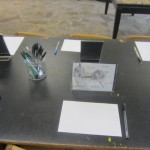
-
An ear provocation.
-
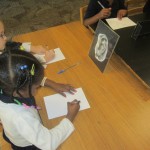
-
Cariah draws the ear .
-
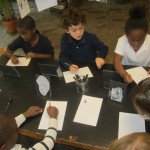
-
Friends pay close attention to detail in their drawings.
-
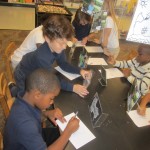
-
What do you see? What do you hear?
Tags: capable, communication, friendship, problem solving, relationships
Nov
05
2012

Mrs. Argus
This Thursday, Friday, and Saturday, our very own Lucas, Beatrice, and Ruth will be performing in The Wiz at Warren Central High School. As they make their stage debut, we would love to support them as a community. If your family is able, come out to the show! Tickets are $10 for adults and $8 for students. We would love to see you there.
Nov
05
2012

Mrs. Argus

